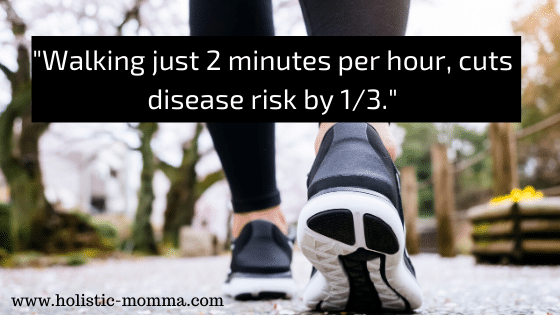The Top 7 Apps That Pay You To Workout
As a busy person, you must have activities at work that require long hours of sitting. Most of us are unaware that sitting for extended periods leads to different health risks. Adults spent 65% of their day in sedentary around 9-10 hours. Including brief workouts daily or weekly can add years on to your life.

There are complications associated with too much sitting. We get tired too often because we sit a lot. Researches compare sitting to smoking. It takes years from your life the more times you sit.
“People who spend most of their day sitting, have as much as a 50% increased chance of dying prematurely from all causes. Excessive sitting is the “new smoking.”
The risk of a heart attack in people who sit all day is almost the same as that of smokers,” according to Lifetime Physical Fitness and Wellness.
A study shows that you can increase your lifespan by two years if you reduce sitting for three hours daily [1].
(Read to the end to find out how to make money while exercising)
Table of Contents
What Happens to Your Body When You Keep Sitting?
You have limited blood circulation. The legs store blood from prolonged sitting. The spine carries much weight of the body. Sitting leads to more complications in the skeletal system.
It damages different organs of the body.
Heart
Sitting prevents the continuous flow of blood. When muscles fail to burn fat, there are more chances for fatty acids to store in the bloodstream and clog the heart.
Brain
Having a sedentary lifestyle affects the way brain functions. It limits the brain’s works. When the flow of blood and oxygen is poor, the body has fewer chances to release mood-enhancing hormones.
It is natural for people’s brains and bodies to function better with enough mood enhancers.
Pancreas
Diabetologia published a study showing that people tend to end up with diabetes and heart disease twice when they have excess sitting hours even by one day.
Our body responds to sugar dramatically when our body carries more weight.
One study shows increased chances of acquiring diabetes through prolonged sitting [2].
Leg problems start to show up. Varicose veins are common to people with a sedentary lifestyle. Prolonged sitting tends to store blood and stretch varicose veins leading to swells and blood clots.

When legs are moving, there are fewer chances to have weak bones.
It causes muscle degeneration.
Some organs lose grip from muscles attached to other body parts. Constant moving firms muscles.
It can damage our spine and develop posture problems.
Sitting carries the body’s weight. Chronic pains are associated with prolonged sitting. Sitting in front of the computer for long periods adds pressure on the spine. If you sit in a hunched position during busy times, it can lead to osteoporosis.
Notice how it can wreck your back. Sitting is associated with 24 chronic diseases.
It can lead to digestion problems.
When you sit after eating, it compresses food in the stomach. It affects digestion. Abnormal digestion leads to cramping, bloating, constipation, and irregular bowel movement. The body keeps the waste longer with the probability of intoxication.
It is associated with the development of different types of cancer.
Having a sedentary lifestyle can lead to lung cancer by 54%, Uterine cancer by 66%, and colon cancer by 30%.
Time to Get Off the Chair!
The average agrarian worker sits for about three hours a day while a regular office worker sits for 13 to 15 hours a day. See the differences in their built, muscle tone, and posture.
There are many ways to get away from a sedentary lifestyle. You can associate walking and standing to your full-body workout. Manage your sitting habits in the office.

Get a boost on your lifestyle. The Center for Disease Control and Prevention recommends 150 minutes of normal activities a week. Anyone can meet this with 7,000 to 10,000 steps a day.
- “As little as 2 minutes of gently walking around the room per hour has been shown to cut disease risk by one third,” LifeTime Physical Fitness and Wellness.
- If you are working at the office, set up walking and standing goals to replace your sitting habits.
- Get to your office mate’s cubicle instead of sending a private message.
Avoid using the elevator. - Organize your place where most things are reachable only when you stand up.
- Use a chair with no armrest. The same thing when you are typing, lift your arms, and keep a good sitting position or better, stand up.
Find ways to keep away from your chair.
If you are at home:
Try body weights workout while watching your favorite show.
You can make a simple workout for legs. When cleaning, use the stairs frequently with simple chores. Click here for a Body Weight Workout ideas.
Sit on an exercise ball or exercise ball chair, when needing to sit. This helps improve core strength, and allows you to do exercises and stretches on it. Minimizing the time you sit hunched over, looking down at your computer or phone.

Monitor your Simple Workouts to Keep Moving
With the rise of technology, you can monitor even your steps and movements. Pedometers are proven to help fast-track the progress of workout programs. It helps people undergoing therapies to monitor their progress [3]. Now, you can even monitor your progress using your mobile phones.
7 Apps to Get Your Workout Started Now
- Map My Fitness is a top recommended app to monitor different fitness routines. Your records of different exercises are recorded in this app to keep you motivated.
- Google Fit collaborated with the American Heart Association to monitor activities. Its goals are to keep its users moving. The app monitors different sports and fitness activities. Set Move Minutes and Heart Points to achieve for the day.
- The StepsApp displays the number of burned calories, spent time, steps count, and covered distance. GPS sensors track activities. Take the phone every time you walk to count your steps.
- RockMyRun stores different music you can listen to during your fitness activities. Depending on your workout, you can set the music based on the person’s steps per minute, ideal cadence, or heart rate.
- Apple Health stores your health activities, body measurements, cycle tracking, heart rates, and other vitals. You can share data from other fitness apps like Garmin Data, Mi Fit, or Wahoo Fitness.
- MapMyWalk creates a walking route for you. Sync it with smart shoes and track your steps and distance covered.
- Manage your fitness goals with the Fitbit app. It helps you not only on tracking steps, but monitors your food and hydration too!
3 Apps that PAY You to Workout
- Walk with a cause with Charity Miles. It lets you donate money to your chosen charity for every mile you move.
- Stepbet uses money for motivation too. Put in your money to set your goals. Lose money when you didn’t hit your target. Lost money goes to users who have met their target. Win more money when you hit your target!
- Sweatcoin App is an app that rewards you for your movement. Every 1,000 steps earn a Sweatcoin. Compete with other users and use your Sweatcoin for purchase.
Conclusion:
To successfully limit your sitting, you need motivation and determination. Keep a strict discipline. Be consistent.
You never know how many hours you are adding to your life when you avoid a sedentary lifestyle.
References:
[1]https://bmjopen.bmj.com/content/2/4/e000828
[2]https://www.ncbi.nlm.nih.gov/pubmed/28054097
[3] https://www.ncbi.nlm.nih.gov/pmc/articles/PMC4115486/
Originally posted 2020-02-18 09:00:00.
Megan Santiago
Latest posts by Megan Santiago (see all)
- How to Find a Trauma Therapist in Tampa - September 30, 2024
- Get Your Child to Listen: A Clear-Cut Way To Feel Heard - March 10, 2024
- Help With Bills – How to Get Financial Assistance - March 10, 2024


Like!! Great article post.Really thank you! Really Cool.